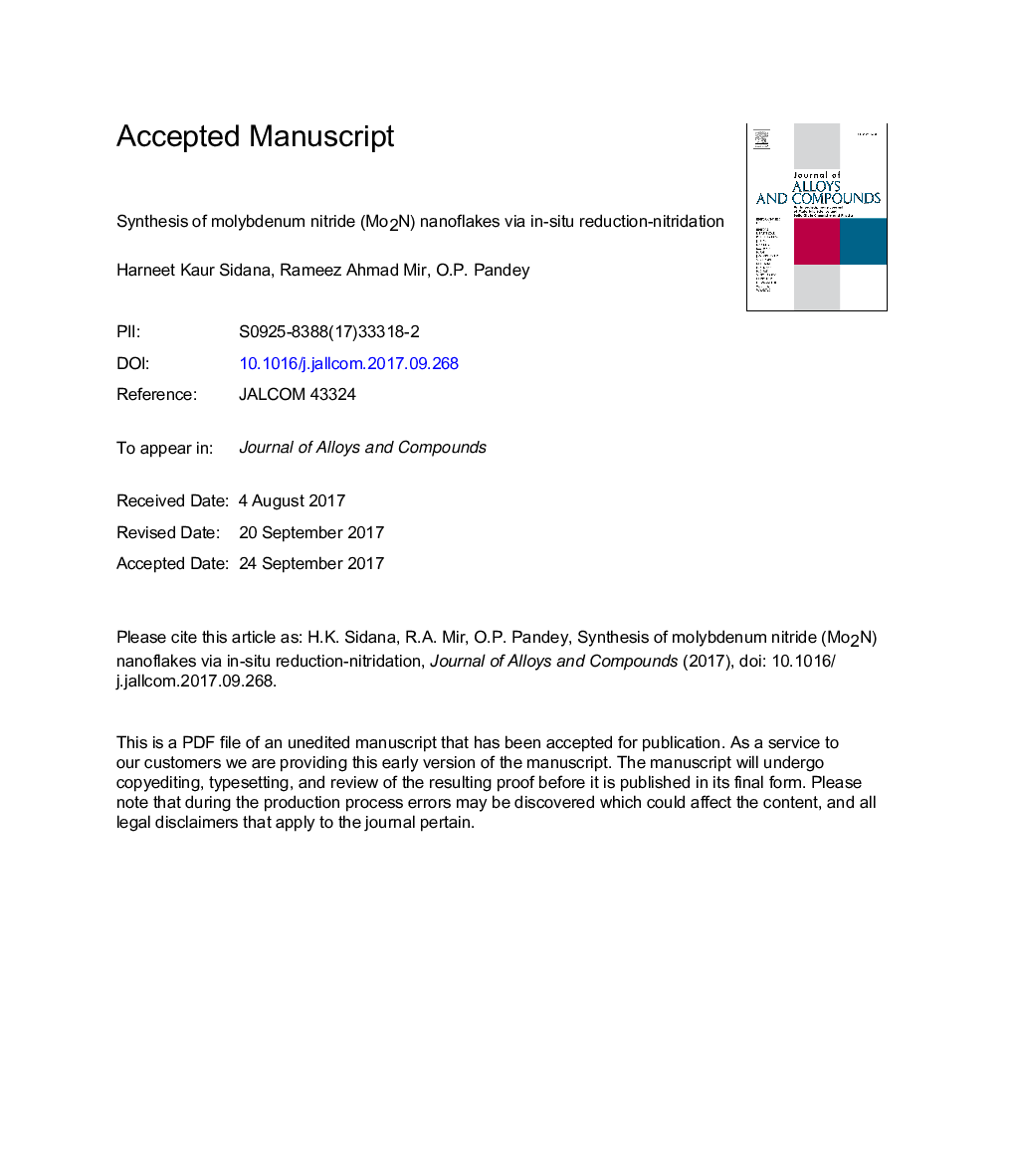| Article ID | Journal | Published Year | Pages | File Type |
|---|---|---|---|---|
| 7994446 | Journal of Alloys and Compounds | 2018 | 37 Pages |
Abstract
Nanoflakes of molybdenum nitride (β-Mo2N) has been synthesized via a simple reduction-nitridation route using ammonium heptamolybdate tetrahydrate (AHM) as a source of both molybdenum and nitrogen and magnesium (Mg) as reducing agent in an autoclave. Sodium azide has been used as an additional nitrogen source to enhance nitridation for the formation of single phase β-Mo2N at 700 °C. The structural, morphological and magnetic behavior of as synthesized samples were investigated. The mean particle size was calculated by Scherrer formula. Williamson-Hall method was adopted to calculate the amount of strain in the nano particles. The effect of holding time, synthesis temperature and variation of Mo and N content has been studied. The as synthesized samples were characterized by X-ray diffraction (XRD), field emission scanning electron microscopy (FE-SEM), high resolution transmission electron microscopy (HR-TEM) and vibrating sample magnetometer (VSM). XRD peaks confirmed the formation of pure phase β-Mo2N, while, microstructural analysis exhibited flake/plate-like morphology. VSM data depicted that synthesized samples were predominantly diamagnetic in nature. On the basis of XRD, structural and morphological results, a synthesis mechanism has been framed for the formation of Mo2N in an autoclave.
Related Topics
Physical Sciences and Engineering
Materials Science
Metals and Alloys
Authors
Harneet Kaur Sidana, Rameez Ahmad Mir, O.P. Pandey,
